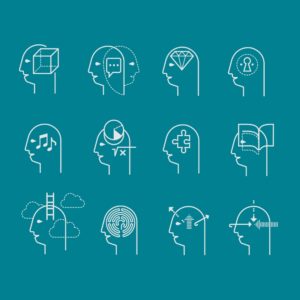

Last fall at the South Denver STEM Summit, columnist Thomas Friedman spoke on 21st-century success. He used a phrase, “PQ and CQ are greater than the IQ,” to illustrate his belief that a student’s persistence quotient (PQ) and curiosity quotient (CQ) were better indicators of success than the more familiar intelligence quotient (IQ).
‘PQ and CQ are greater than the IQ’
One of the most terrifying things about content-obsessed teaching “to the test” is how readily it abandons these soft skills for rote memorization. Much recent professional development has focused on ways to reinvigorate curiosity in the classroom, from project-based learning to “genius hour,” but another way to work toward student success is through the deliberate addition of soft skills into teacher lesson planning.
Soft skills increase student performance, but must be taught in many instances
“Soft,” or non-cognitive skills, include impulse control, empathy, conscientiousness and perseverance. Friedman is not alone in identifying soft skills as a better indicator of a student’s or worker’s ability than their basic intelligence. In a 2012 episode of “This American Life,” researcher Paul Tough described his findings regarding success in school, jobs or even marriage. Tough’s research iterated the importance of non-cognitive skills and other personality traits.
Recent research from Duke finds that teaching such skills should be a focus in the classroom not only to increase performance, but to help decrease juvenile delinquency and crime. In her recent article on the Duke results, Lynne Shallcross points out that because educational policies praise content knowledge and cognitive skill, modifying existing school systems is difficult. As such, while teachers wait for administrations to reduce content-focused testing and increase focus on non-cognitive skills, teachers can work to thoughtfully incorporate them in overall course design and individual lesson plans.
How can teachers make non-cognitive skill instruction part of their course design?
Non-cognitive skills such as social ability, resilience, self-control and time management can seem to be impossible to integrate into course design, but project-based learning and other student-driven or self-paced projects can help students, particularly when given some amount of guidance and oversight from teachers. Twenty-Percent Time or Genius Hour projects, which give students full control of how to invest their efforts, often include a pitch, timeline and goal setting, as well as a presentation at the end. As such, skills like time management and self-control are inherently part of the project. When my students do their Twenty-Percent Time projects, they set their own timetable of goals and check in with me over the course of the semester. This helps them to self-regulate and practice time management.
How group projects can help students build social and emotional skills
While it can sometimes be difficult to manage, group work is another arena where non-cognitive skills can be easily integrated into the classroom. Problem- or project-based learning can be great opportunities for students to engage in social skills and the smaller units often help quiet or more introverted students to find a voice. Additionally, students who may be resistant to teacher timelines feel a camaraderie when working in a group that keeps them on task and motivated. The freedom that group work allows for students also helps spur them to work on time-management and self-control, particularly when they might rather talk than work. This reinforces the idea of self-regulation and time-on-task, two keys to future success.
Teachers: Add soft skill goals to lesson plans
Often when designing lessons, teachers are deliberate about identifying and communicating cognitive skill goals to students. We should be equally deliberate with non-cognitive skills and consider incorporating student self-assessment into lessons. While a student can readily measure their cognitive gains in pre- and post-testing, they do not always take time to reflect on their own work, be it successes or challenges, in specific non-cognitive skills.
Having students judge their own grit and persistence or highlight an area where they exercised effective failure helps them understand that resilience is potentially more important than memorizing the state capitals. Deliberately adding reflection on soft-skill challenges and growth to lesson design helps students add goal-setting and self-reflection to their educational experience and helps prepare them for long-term success.
Teaching character in school is not a new idea, but it’s overdue for a resurgence
In many ways, teachers have always taught character traits and non-cognitive skills in the classroom. The social environment of public schooling requires it and teachers have long known that those with the strongest soft skills can and will grow into some of the most successful people. Unfortunately, policy makers and administrators have focused on one of the easiest measures, cognitive skills, at the detriment of the more difficult to ascertain non-cognitive skills. It’s important to remember, though, that time spent on teaching these skills will not be lost, as those who are best armed with strong soft skills are most likely to excel.
Monica Fuglei is a graduate of the University of Nebraska in Omaha and a current faculty member of Arapahoe Community College in Colorado, where she teaches composition and creative writing.
Categorized as: Tips for Teachers and Classroom Resources
